 The broader perspective of education is to prepare students to become responsible and knowledgeable citizens for a resourceful and industrious life in a globalised world. In this context, it has become mandatory to reform and strengthen the educational system. Evaluation becomes a tool of ascertaining the level to which the educational system has succeeded in achieving its goals. The Continuous Comprehensive Evaluation (CCE) model seeks to reform the existing examination based assessment system to a more holistic evaluation of students
The broader perspective of education is to prepare students to become responsible and knowledgeable citizens for a resourceful and industrious life in a globalised world. In this context, it has become mandatory to reform and strengthen the educational system. Evaluation becomes a tool of ascertaining the level to which the educational system has succeeded in achieving its goals. The Continuous Comprehensive Evaluation (CCE) model seeks to reform the existing examination based assessment system to a more holistic evaluation of students
By sheena Joseph
Continuous Comprehensive Evaluation (CCE) is a tool that would enable children to review their own learning abilities. After every chapter, there will be a number of competencies listed for which the learner would answer in yes or no. The answers will be given to the class teacher. When the learner answers in the negative, then he/she will be given corrective coaching. When majority of the students answer in the negative, then the teacher can change the teaching methodology to suit student requirements.
 “The teacher and the student become the key stakeholders in the CCE model. Formative assessments form the crux of CCE and we are coming up with a lot of resources for this”
“The teacher and the student become the key stakeholders in the CCE model. Formative assessments form the crux of CCE and we are coming up with a lot of resources for this”
Vineet Joshi
Chairman, Central Board of Secondary Education (CBSE)
In a circular issued by the CBSE on Examination Reforms and Continuous and Comprehensive Evaluation (CCE) to all heads of CBSE institutions it has been reiterated that external examinations 'are largely inappropriate for the 'knowledge society' of the 21st century and its need for innovative problem solvers'. Questions if not framed well, “call for rote memorisation and fail to test higher-order skills like reasoning and analysis, lateral thinking, creativity and judgment. External exams make no allowance for different types of learners and learning environments and induce an inordinate level of anxiety and stress.” The circular asserts that a reliable and functional school based evaluation system needs to be created that would cater to the holistic assessment of the learner, which would include co-scholastic area of life skills, attitudes and values, sports and games as well as co-curricular activities.
The CCE system intends to tackle these issues through consistent and focused reforms in the examination system.
What is Evaluation?

“The implications of CCE is very encouraging. The creative teachers have appreciated the change, but few will always take longer to adapt to the reforms. Change is always welcome”
Rekha Sharma
Principal, Bharatiya Vidya Bhavan's Mehta Vidyalaya
Evaluation is a procedure for establishing how far the knowledge experiences are in reality creating the preferred outcomes. The NCERT is occupied in numerous activities linked to measurement and assessment in the area of examination reforms. The activities related to this are particularly aimed at creating and homogenising scientific tools for appraisal of a range of areas related to a student's growth.
As Vineet Joshi, Chairman, Central Board of Secondary Education (CBSE) elaborates, “The teacher is the nodal point for the implementation of CCE, while at the same time, it needs to be emphasised that the reforms are being implemented for the benefit of students. The teacher and the student become the key stakeholders in the CCE model. Formative assessments form the crux of CCE and we are coming up with a lot of resources for this. Summative assessment is something that teachers are already familiar with and includes end of term assessments. We are going to start training sessions specifically for formative assessments. We are also sensitising the parents on what to expect from CCE, because when parents realise that it is a supportive system, they will better be able to accommodate the entire process.”
Tests and Examinations

“I want to complement CBSE for bringing such changes into the school education system. We have been having regular in-service teacher training to familiarise teachers with the same”
Anubhuti Mehta
Principal, KV Sec 2, R K Puram
Conventionally, schools have been using tests in evaluation programming to assess if the student has obtained certain process- and content-related knowledge. The focus of the tests is on the mission, goal, and objectives and permit useful projections of student behavior and learning. A well created and watchfully managed test which is adjudged by two or more evaluators for the definite purpose of ascertaining program strengths and weaknesses remains one of the most popular instruments for evaluating student achievements.
Explaining the concepts of formative and summative assessments in the CCE context, Srikanth, Director and COO, Manipal K12 education points out that these are assessment tools used by the teacher to continuously monitor student progress in a non threatening, supporting environment. “It involves regular descriptive feedback, a chance for the student to reflect on the performance, take advice and improve upon it,” he says. According to him, if used effectively it can improve student performance tremendously while raising the self-esteem of the child and reducing the workload of the teacher.
Portfolio Evaluation

“Portfolios should celebrate student learning through the year, showing the development of the child, both within and outside the design of the curriculum in all subject areas”
Srikanth
Director and COO
Manipal K12 Education
Portfolios used for evaluation are mostly exemplified by compilations of student work that display to the teachers and the student the improvement and accomplishment in stipulated areas. Portfolio assessment is a supportive appraisal tool as it permits the faculty to examine an entire scope of students' work on a regular basis. The use of student portfolios also provides the faculty with the ability of determining the content and manages the quality of the assessed material.
Describing how a teacher can have an effective medium of maintaining student portfolios in a classroom Srikanth explains, “Portfolios are a collection of the child's work which is designed to demonstrate success, growth, higher order thinking, creativity and reflection. The portfolio is an exhibition of an active mind at work. Portfolios should celebrate student learning through the year, showing the development of the whole child, both within and outside the design of the curriculum in all subject areas.”
Portfolios are used by students to communicate development with parents and with teachers and peers throughout the year. They are intended to be student-managed with teacher guidance so students take ownership of their portfolios. The balance of 'teacher-selected' versus 'student-selected' content in portfolio depends on the age and maturity of students. Teachers help students learn how to thoughtfully choose which items to include in their portfolios and provide students opportunities to thoughtfully remove items also.
Technologies for Evaluation
There are several technologies that can help in assisting schools in implementation of examination reforms under the CCE model. These include web based applications that empower schools to capture students' details. Templates are available for activities on formative assessments and summative assessments with default descriptive indicators. There are options to customise them to the school requirements.
Report Card Generation tools can prove to be useful for generation of student results. Once marks are entered, all other calculations, conversion to grades and formatting is done automatically. The teacher can select the descriptive indicators and print the report card. There are options to generate comprehensive reports for performance analysis, consolidated mark sheets and many more. Teachers may exercise the option to analyse challenging areas faced by the student and give feedback to student or parent through email or web portal.
“The purpose of technology-assisted tools is to reduce the strain on today's teachers, and to help them improve and optimise their teaching methods. With multimedia tools



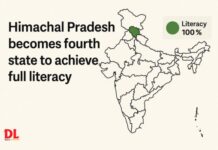
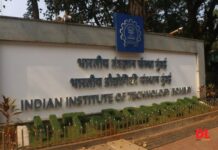

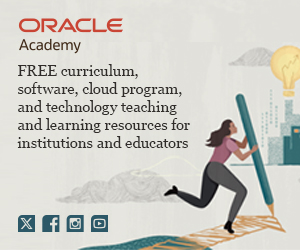

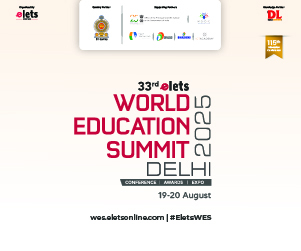

 The broader perspective of education is to prepare students to become responsible and knowledgeable citizens for a resourceful and industrious life in a globalised world. In this context, it has become mandatory to reform and strengthen the educational system. Evaluation becomes a tool of ascertaining the level to which the educational system has succeeded in achieving its goals. The Continuous Comprehensive Evaluation (CCE) model seeks to reform the existing examination based assessment system to a more holistic evaluation of students
The broader perspective of education is to prepare students to become responsible and knowledgeable citizens for a resourceful and industrious life in a globalised world. In this context, it has become mandatory to reform and strengthen the educational system. Evaluation becomes a tool of ascertaining the level to which the educational system has succeeded in achieving its goals. The Continuous Comprehensive Evaluation (CCE) model seeks to reform the existing examination based assessment system to a more holistic evaluation of students “The teacher and the student become the key stakeholders in the CCE model. Formative assessments form the crux of CCE and we are coming up with a lot of resources for this”
“The teacher and the student become the key stakeholders in the CCE model. Formative assessments form the crux of CCE and we are coming up with a lot of resources for this”


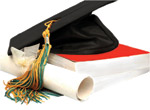 A new masters degree programme in special education has been launched at Abu Dhabi University (ADU), that aims at qualifying teachers to develop strategic plans in different areas of interest as well as to provide and lead professional development programmes in special education. Scheduled to be offered in 2011, the new programme is developed based on international standards from major universities in Michigan, Ohio and Florida, US, London Metropolitan University and others. It has also been reviewed and assessed by expert teams in the field from the US.
A new masters degree programme in special education has been launched at Abu Dhabi University (ADU), that aims at qualifying teachers to develop strategic plans in different areas of interest as well as to provide and lead professional development programmes in special education. Scheduled to be offered in 2011, the new programme is developed based on international standards from major universities in Michigan, Ohio and Florida, US, London Metropolitan University and others. It has also been reviewed and assessed by expert teams in the field from the US. Recently, a national Information and Communication Technology connectivity project was launched at Ghana, for Colleges of Education to ensure that teachers reappraise their methodologies to meet the learning needs of their students. This Government ICT connectivity project would cover around 38 Colleges of Education (formerly Teacher Training Institutions), 37 Public Technical Institutes, 510 Public Senior High Schools, and 23,000 Public Basic Schools with computing infrastructure. Under this project the schools have been equipped with computers, printers, scanners, projectors and servers. The project would significantly push forward the new, ICT policy of the government.
Recently, a national Information and Communication Technology connectivity project was launched at Ghana, for Colleges of Education to ensure that teachers reappraise their methodologies to meet the learning needs of their students. This Government ICT connectivity project would cover around 38 Colleges of Education (formerly Teacher Training Institutions), 37 Public Technical Institutes, 510 Public Senior High Schools, and 23,000 Public Basic Schools with computing infrastructure. Under this project the schools have been equipped with computers, printers, scanners, projectors and servers. The project would significantly push forward the new, ICT policy of the government. Soon Britain is to roll out new rules according to which school teachers will be allowed to frisk students for mobile phones, electronic gadgets and even pornography and cigarettes in a bid to prevent disruption in classrooms. The same would be inclusive highlights of an education White Paper that are to be published next week outlining the new rights for teachers to be able to search students for any item that can potentially interrupt lessons. Confiscation of mobile phones, MP3 players and other electronic gadgets will be allowed in case of need by the school staff. There are also included in the same plans to simplify rules on the use of physical force, giving teachers greater powers to take disruptive children out of classrooms without fear of legal action.
Soon Britain is to roll out new rules according to which school teachers will be allowed to frisk students for mobile phones, electronic gadgets and even pornography and cigarettes in a bid to prevent disruption in classrooms. The same would be inclusive highlights of an education White Paper that are to be published next week outlining the new rights for teachers to be able to search students for any item that can potentially interrupt lessons. Confiscation of mobile phones, MP3 players and other electronic gadgets will be allowed in case of need by the school staff. There are also included in the same plans to simplify rules on the use of physical force, giving teachers greater powers to take disruptive children out of classrooms without fear of legal action.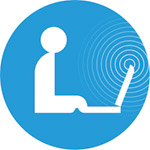 An application submitted by Mountain Province State Polytechnic College (MPSPC) was approved by the Commission on Higher Education (CHEd), for the electronic library (e-lib) connectivity which will allow students, faculty, and staff to have a wider avenue and greater access to the newest trends in the information and communication technology (ICT) industry. This project on e-library connection of the state-run higher education, is the first out of the eleven government funded projects that have been realised this year in connection with its pending application for accreditation of some of its courses. Dr Nieves A Dacyon, MPSPC president, said the e-library connection is a collaborative project of the National Library of the Philippines, University of the Philippines system, CHEd, Department of Science and Technology (DoST), and the higher education institution based in the province to boost its chances of being the third university in the Cordillera.
An application submitted by Mountain Province State Polytechnic College (MPSPC) was approved by the Commission on Higher Education (CHEd), for the electronic library (e-lib) connectivity which will allow students, faculty, and staff to have a wider avenue and greater access to the newest trends in the information and communication technology (ICT) industry. This project on e-library connection of the state-run higher education, is the first out of the eleven government funded projects that have been realised this year in connection with its pending application for accreditation of some of its courses. Dr Nieves A Dacyon, MPSPC president, said the e-library connection is a collaborative project of the National Library of the Philippines, University of the Philippines system, CHEd, Department of Science and Technology (DoST), and the higher education institution based in the province to boost its chances of being the third university in the Cordillera. A MoU was signed between Indira Gandhi National Open University (IGNOU) and the Unique Identification Authority of India (UIDAI) for implementation of the Unique Identification Numbers (UID) project. According to the MoU, IGNOU will collaborate with the UIDAI in conduction proof of concept (POC) studies; the university will also be a pilot to test the working of the technology and process of enrollment into the UID database and subsequently full roll-out of the UID project. The MOU was signed between UIDAI chairman Nandan Nilekani and IGNOU vice-chancellor VN Rajasekharan Pillai.
A MoU was signed between Indira Gandhi National Open University (IGNOU) and the Unique Identification Authority of India (UIDAI) for implementation of the Unique Identification Numbers (UID) project. According to the MoU, IGNOU will collaborate with the UIDAI in conduction proof of concept (POC) studies; the university will also be a pilot to test the working of the technology and process of enrollment into the UID database and subsequently full roll-out of the UID project. The MOU was signed between UIDAI chairman Nandan Nilekani and IGNOU vice-chancellor VN Rajasekharan Pillai.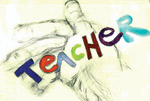 The Gujarat Secondary and Higher Secondary Education Board (GSHSEB) has come up with a pilot drive to train 600 teachers in the state of Gujarat. The aim of the initiative was to improve the quality of education and introduce advanced computerised teaching methods in classroom teaching. Under the project, instead of school principals who used to receive such training so far, teachers will undergo classroom reform training. Known as the ‘ICT Blended Design Learning Education Project’, the initiative will be implemented during the duration of November 22-27, on experimental basis in 60 schools of three districts — Vadodara, Anand and Surat.
The Gujarat Secondary and Higher Secondary Education Board (GSHSEB) has come up with a pilot drive to train 600 teachers in the state of Gujarat. The aim of the initiative was to improve the quality of education and introduce advanced computerised teaching methods in classroom teaching. Under the project, instead of school principals who used to receive such training so far, teachers will undergo classroom reform training. Known as the ‘ICT Blended Design Learning Education Project’, the initiative will be implemented during the duration of November 22-27, on experimental basis in 60 schools of three districts — Vadodara, Anand and Surat. Held in August 2010, the Olympiad took place at 102 centres in South Asian Association for Regional Cooperation (SAARC) nations like Afghanistan, Bangladesh, Bhutan, Maldives and Sri Lanka, including 83 in India. A total of 4,384 students of the 11th grade participated. Out of these, 41 were selected for their outstanding performance. Twenty-nine prize winners were from India and 12 were from other SAARC nations. The winners received medals, awards, cash prizes and merit certificates. The function coincided with India’s first prime minister Jawaharlal Nehru’s 121st birthday, 25th anniversary of IGNOU and 65th anniversary of UNESCO.
Held in August 2010, the Olympiad took place at 102 centres in South Asian Association for Regional Cooperation (SAARC) nations like Afghanistan, Bangladesh, Bhutan, Maldives and Sri Lanka, including 83 in India. A total of 4,384 students of the 11th grade participated. Out of these, 41 were selected for their outstanding performance. Twenty-nine prize winners were from India and 12 were from other SAARC nations. The winners received medals, awards, cash prizes and merit certificates. The function coincided with India’s first prime minister Jawaharlal Nehru’s 121st birthday, 25th anniversary of IGNOU and 65th anniversary of UNESCO. The Indian Human Resource Development Ministry has signed a MoU with Unique Identification Authority of India, realising the importance of Unique Identification Number. The partnership is to support education sector for better implementation of schemes, tracking student’s record and curbing menace of fake degrees. The proposed MoU would be helpful in tracking student’s mobility by creating an electronic registry of all students, right from primary/elementary level through secondary and higher education, as also between the institutions. The agreement was signed between Amit Khare, Joint Secretary, HRD Ministry and Anil Kachi, Deputy Director GeneraL, UIDAI.
The Indian Human Resource Development Ministry has signed a MoU with Unique Identification Authority of India, realising the importance of Unique Identification Number. The partnership is to support education sector for better implementation of schemes, tracking student’s record and curbing menace of fake degrees. The proposed MoU would be helpful in tracking student’s mobility by creating an electronic registry of all students, right from primary/elementary level through secondary and higher education, as also between the institutions. The agreement was signed between Amit Khare, Joint Secretary, HRD Ministry and Anil Kachi, Deputy Director GeneraL, UIDAI. According to some officials, soon Indian Institute of Management-Kozhikode will sign Memorandum of Understanding with top 10 Chinese universities. Recently, a tripartite agreement was signed by IIM-K with US’ Yale University. Debashish Chatterjee, IIM-K Director also mentioned that IIM-K was looking at other universities, beyond US, in the east. The institute presently has collaborations with 20-25 foreign universities which is likely to go up to 50 in a year’s time, said Chatterjee, who recently returned after a four-day visit to China. The tripartite MoU entered between the Yale University, IIM-K and IIT-Kanpur, to launch the Yale India Leadership Programme, would expose university and academia leaders in India at the level of Vice Chancellors and Deans to the best practices of academic institutional management in the US.
According to some officials, soon Indian Institute of Management-Kozhikode will sign Memorandum of Understanding with top 10 Chinese universities. Recently, a tripartite agreement was signed by IIM-K with US’ Yale University. Debashish Chatterjee, IIM-K Director also mentioned that IIM-K was looking at other universities, beyond US, in the east. The institute presently has collaborations with 20-25 foreign universities which is likely to go up to 50 in a year’s time, said Chatterjee, who recently returned after a four-day visit to China. The tripartite MoU entered between the Yale University, IIM-K and IIT-Kanpur, to launch the Yale India Leadership Programme, would expose university and academia leaders in India at the level of Vice Chancellors and Deans to the best practices of academic institutional management in the US.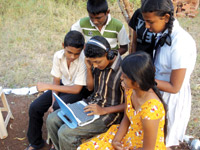 The education sector in India, particularly the higher education segment, is going through a very exciting phase. Not just is investment pouring in, the country's ministry of Human Resource Development (MHRD) is driving major policy changes that would have a long term impact on the overall education sector in years to come.
The education sector in India, particularly the higher education segment, is going through a very exciting phase. Not just is investment pouring in, the country's ministry of Human Resource Development (MHRD) is driving major policy changes that would have a long term impact on the overall education sector in years to come.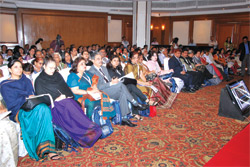 The School Education Conclave 2010 was organized with the objective of sharing best practices in academic and institutional excellence and to discuss contemporary issues in K-12 education. It highlighted strategies and steps that will help carry forward the educational reforms in India
The School Education Conclave 2010 was organized with the objective of sharing best practices in academic and institutional excellence and to discuss contemporary issues in K-12 education. It highlighted strategies and steps that will help carry forward the educational reforms in India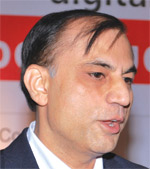 Rajesh Gupta
Rajesh Gupta Mangalore Refinery and Petrochemicals Limited invests in CSR
Mangalore Refinery and Petrochemicals Limited invests in CSR ViewSonic launches PJD7383i, interactive projector
ViewSonic launches PJD7383i, interactive projector Radio is a cost-effective and has greater learning effect than textbooks or teacher education. Some of the educational advantages of using radio include improvement in quality and relevance, low cost and increase accessibility. The challenges that it presents include lack of dual interaction, lack of clarification, interruptions in transmissions, fixed pace for all and lack of space for reflection on content being taught. Radio is supportive of providing remedial tutorials; providing updates; presenting material in a manner that children can identify with emotions and outlook of the protagonist; and providing an alternate to TV programmes.
Radio is a cost-effective and has greater learning effect than textbooks or teacher education. Some of the educational advantages of using radio include improvement in quality and relevance, low cost and increase accessibility. The challenges that it presents include lack of dual interaction, lack of clarification, interruptions in transmissions, fixed pace for all and lack of space for reflection on content being taught. Radio is supportive of providing remedial tutorials; providing updates; presenting material in a manner that children can identify with emotions and outlook of the protagonist; and providing an alternate to TV programmes.  Community Media Centers are the places where opportunities for operating media tools such as community radio are available. Such initiatives encourage the understanding of usage and effects of media over a community. It implies engagement of the local community people, giving them a stake in the dissemination of knowledge. Media literacy comprises of demanding accountability from media. It implies understanding the process of transmitting information. It activates community members to participate and own the content they need and spread. Awareness about media and its potential is another component of literacy. Government formulated policy at different times. In December 2002, the policy was formulated and revamped in 2006 with only difference being that initially only reputed educational institutes were allowed to operate community radio's while lately, NGOs, CSOs of good repute have been allowed to operate on the same.
Community Media Centers are the places where opportunities for operating media tools such as community radio are available. Such initiatives encourage the understanding of usage and effects of media over a community. It implies engagement of the local community people, giving them a stake in the dissemination of knowledge. Media literacy comprises of demanding accountability from media. It implies understanding the process of transmitting information. It activates community members to participate and own the content they need and spread. Awareness about media and its potential is another component of literacy. Government formulated policy at different times. In December 2002, the policy was formulated and revamped in 2006 with only difference being that initially only reputed educational institutes were allowed to operate community radio's while lately, NGOs, CSOs of good repute have been allowed to operate on the same. 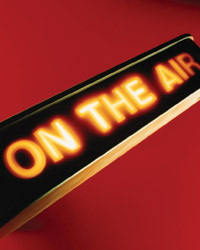 Often it is said that multi-media help teachers and education system to go beyond talk and chalk method to impart knowledge in most suitable way. So the issues that rise alongside use of multi media are
Often it is said that multi-media help teachers and education system to go beyond talk and chalk method to impart knowledge in most suitable way. So the issues that rise alongside use of multi media are 








